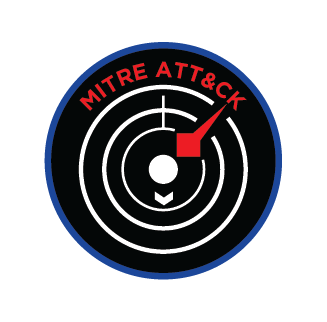
External Adversary View
They See Attack Paths, Not Vulnerabilities. It's Time You Saw What They See.
You've invested heavily in security, and your dashboards tell you that you are protected. But attackers don't care about your internal scores. They operate from the outside in, relentlessly searching for the one loose thread they can pull to unravel everything. They connect seemingly minor weaknesses—a single compromised credential from the dark web, a forgotten server with an exposed port, a leaked key in a public code repository—into a devastating attack path. This creates a dangerous blind spot between your security data and your actual business risk. ThreatNG's External Adversary View closes that gap. We provide the attacker's perspective, moving beyond endless lists to show you the exact narrative of how you would be targeted by mapping its findings to globally recognized security frameworks to demonstrate real-world tactics.
See Through the Attacker’s Eyes with the External Adversary View

Transform Noise into an Actionable Signal
Stop chasing thousands of "critical" alerts and end the frustration of prioritization paralysis. The External Adversary View transforms noise into a clear signal by mapping ThreatNG's findings to frameworks like MITRE ATT&CK. It automatically connects disparate findings—like a compromised credential discovered on the dark web and an exposed RDP port on one of your subdomains—into a single, high-priority attack path, showing you exactly which adversary tactic it represents. We also enrich vulnerabilities with real-world exploitability data, including CISA KEV and EPSS scores, so your team can stop guessing and focus their valuable time on neutralizing the threats that pose a proven, immediate danger.
Elevate the Conversation from Technical Findings to Strategic Threats
End the struggle of explaining cybersecurity risk to your board. The External Adversary View shifts the conversation from an overwhelming list of technical vulnerabilities to a straightforward, strategic narrative of how an attacker would target your organization. By demonstrating the real-world tactics adversaries use for initial access and persistence, you can move beyond discussing individual CVEs. This enables meaningful, business-focused conversations about disrupting specific, known adversary behaviors, thereby justifying security investments with a clarity that resonates with leadership.

Proactively Close Doors Before They Are Opened
To win the fight, you must see the battlefield as your adversary does. Our capability performs a continuous, unauthenticated, outside-in assessment that perfectly mirrors an attacker's reconnaissance methods. By mapping discovered attack paths to industry-standard frameworks, we reveal the exact tactics and techniques adversaries use to target you, enabling you to close attack paths before they can be exploited proactively.

Frequently Asked Questions: ThreatNG External Adversary View
Understanding the Basics
-
The External Adversary View is a capability that shifts your security perspective from an internal, asset-focused view to an external, attacker-focused one. It continuously and non-intrusively scans your entire external attack surface—just like a real adversary—to discover and connect vulnerabilities and exposures. Instead of just giving you a list of problems, it shows you how an attacker would chain them together to create an attack path, mapping its findings to the MITRE ATT&CK framework to demonstrate real-world tactics.
-
Traditional tools are excellent at creating lists. They list your assets, list your vulnerabilities, and give you a technical score. The External Adversary View offers a unique perspective: it tells you the story behind the data by mapping ThreatNG's findings to frameworks like MITRE ATT&CK.
A Vulnerability Scanner says: "You have a critical CVE."
The External Adversary View shows: "An attacker can use this specific compromised credential, found on the dark web, to access this exposed RDP port." It then maps this entire attack path to a specific adversary technique, such as 'Initial Access' within the MITRE ATT&CK framework, illustrating how an attacker would exploit your weaknesses, rather than just highlighting the presence of a vulnerability.
This moves beyond isolated data points to provide a narrative of risk, connecting findings from across your digital footprint—from code repositories to cloud services—into a coherent and actionable picture.
-
No, it is straightforward. The entire discovery and assessment process is "purely external" and "unauthenticated," meaning it requires no connectors, no agents, and no internal access. We see only what an attacker can see from the public internet, providing you with an accurate, unbiased reflection of your external security posture with zero impact on your operations.
For the Security Practitioner
-
This capability is explicitly designed to solve the problem of alert fatigue by turning noise into a clear, prioritized signal. It extracts the signal from the noise by providing critical context that isolated alerts lack.
For example, the External Adversary View automatically connects a Compromised Credential discovered on the dark web with an exposed sensitive port (like RDP or SSH) found via our Domain Intelligence. It then maps this entire attack path to a globally recognized framework like MITRE ATT&CK, showing you that this combination of findings represents a specific adversary technique for 'Initial Access'.
This mapping is what provides the critical context. What were once two separate, low-priority alerts are now a single, high-priority, actionable threat that demonstrates a clear and present danger. This allows you to focus your team's valuable time on disrupting actual adversary behaviors, not just clearing a backlog of alerts.
-
Mapping findings to an external adversary framework involves translating raw technical findings—such as an open port or leaked credentials—into the context of how an attacker would actually utilize them. These frameworks are essentially globally recognized knowledge bases that categorize and document real-world adversary tactics and techniques.
For example, by mapping our findings to a framework like MITRE ATT&CK, we move beyond theoretical risk. We don't just tell you a vulnerability exists; we show you the specific techniques an attacker would use against you, such as "Initial Access" or "Persistence". This provides a standard, industry-standard language for your team to analyze threats and allows you to build proactive defenses that counter known, documented adversary behaviors.
-
Here’s a real-world example of how the External Adversary View connects disparate findings into a single, contextualized attack path:
The platform might discover two seemingly unrelated things during its continuous, outside-in assessment:
Using its Sensitive Code Exposure module, it finds a hardcoded API key for a cloud service in a public code repository.
Separately, using the Cloud and SaaS Exposure module, it identifies an open, misconfigured cloud storage bucket belonging to your organization.
Individually, these are just two alerts in a long list. However, the External Adversary View automatically connects these dots to reveal a critical attack path: an attacker could use the discovered API key to gain unauthorized access to the open cloud bucket.
This is where the context becomes critical. The External Adversary View then maps this sequence to a framework like MITRE ATT&CK. The discovery of the key maps to technique T1555 - Credentials from Password Stores, and using it to access the cloud service maps to T1078 - Valid Accounts for 'Initial Access'.
What were once two separate, medium-priority findings are now elevated to a single, high-priority incident that clearly demonstrates a viable path for data exfiltration, allowing your team to prioritize and remediate the actual risk.
For the Strategic CISO and Security Leadership
-
This is the core problem that the External Adversary View is designed to address. It helps you elevate the conversation from a technical list of vulnerabilities to a strategic narrative of risk that a board can understand.
Instead of listing specific CVEs, the External Adversary View helps you understand how an attacker might target your organization. It achieves this by mapping the attack paths it finds to well-known adversary frameworks. For example, using a framework like MITRE ATT&CK, you can move the focus from "We have 50 critical vulnerabilities we need to patch" to a more impactful, business-oriented statement: "We have identified three high-probability paths an attacker could use to gain 'Initial Access' to our network. Here is the evidence for each, and here is our plan to disrupt these specific techniques."
This approach translates abstract technical findings into a concrete story of a potential attack. It enables a strategic conversation about disrupting known adversary behaviors, which is more effective for demonstrating risk and justifying security investments than discussing technical jargon.
-
The platform includes an External GRC Assessment capability. It continuously evaluates your external posture from an attacker's perspective. It automatically maps any discovered risks—like an exposed database port or a vulnerability on a server handling sensitive data—directly to the relevant controls within frameworks like PCI DSS, HIPAA, GDPR, and POPIA. This transforms compliance from a periodic, manual audit into a proactive, automated process, enabling you to identify and address gaps before an auditor does.
-
The power of the view comes from the breadth and depth of its underlying intelligence. It synthesizes data from across the entire ThreatNG platform by leveraging all of our investigation modules, including but not limited to:
Domain Intelligence: Analyzes everything related to your domains, including DNS records, email security, WHOIS data, subdomain enumeration, exposed ports, and potential takeover susceptibility.
IP Intelligence: Provides context on IP addresses, including shared IPs, network owners (ASNs), geographic locations, and the discovery of exposed private IPs.
Certificate Intelligence: Examines TLS certificates for status, issuers, and associations that can reveal connections between different digital assets.
Social Media: Monitors public posts from your organization to identify content, links, and tags that may contribute to your digital risk.
Sensitive Code Exposure: Discovers public code repositories and mobile applications, scanning them for exposures like hardcoded API keys, access tokens, and other security credentials.
Search Engine Exploitation: Investigates your organization's susceptibility to exposing sensitive information through search engines, including website control files (like robots.txt) and privileged folders.
Cloud and SaaS Exposure: Identifies your presence in the cloud, including open and exposed cloud buckets (AWS, Azure, Google Cloud) and both sanctioned and unsanctioned SaaS applications used by your organization.
Online Sharing Exposure: Identifies your organization's data and code on public sharing platforms such as Pastebin and GitHub Gist.
Sentiment and Financials: Gathers intelligence from lawsuits, layoff chatter, and SEC filings (including Form 8-Ks) to provide a holistic view of business and brand risk.
Archived Web Pages: Scours web archives for historical versions of your online presence that may contain old emails, login pages, or sensitive documents.
Dark Web Presence: Monitors the dark web for mentions of your organization, associated ransomware events, and compromised employee credentials.
Technology Stack: Identifies the full range of technologies your organization uses, including web servers, databases, JavaScript libraries, and content management systems.



